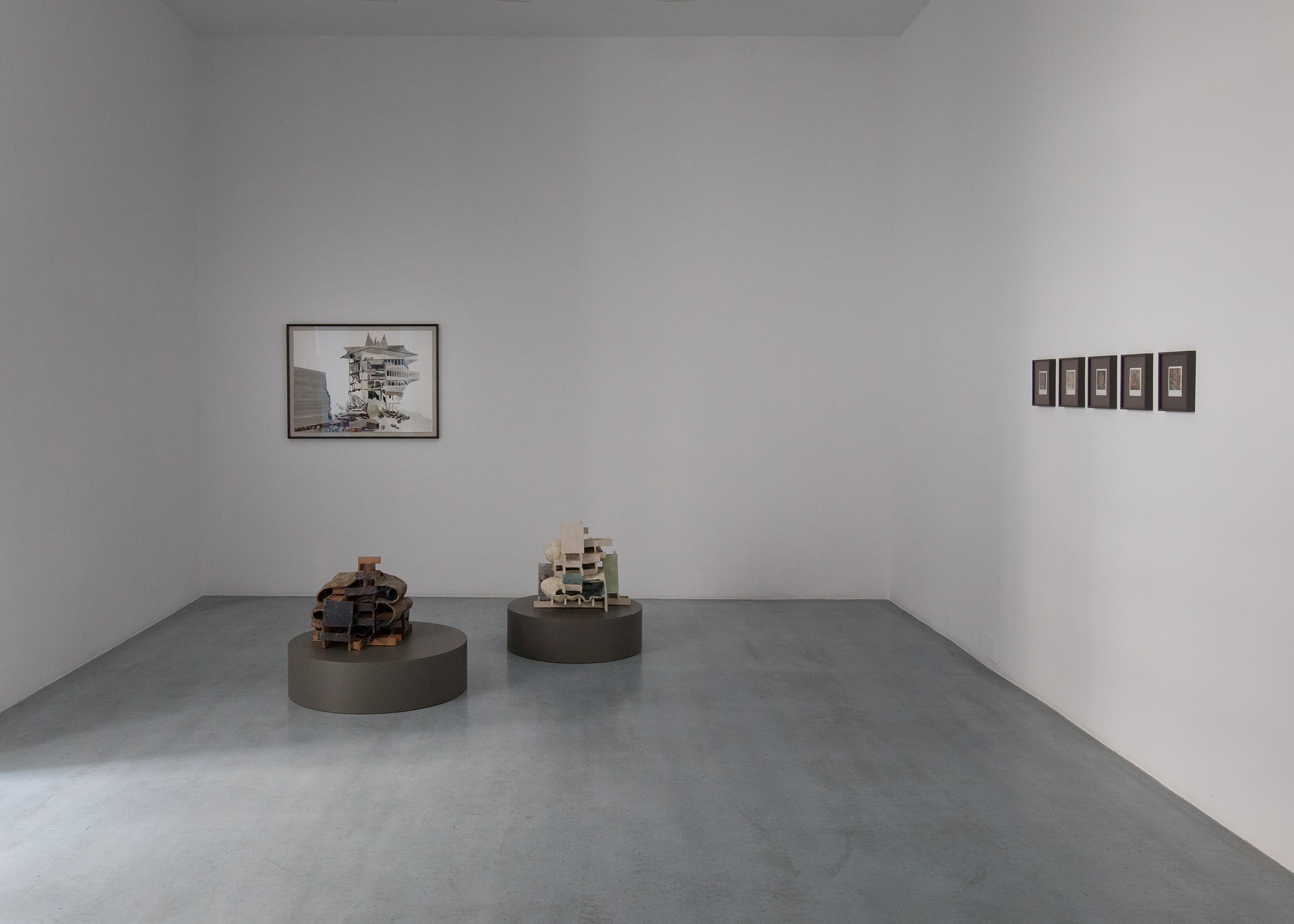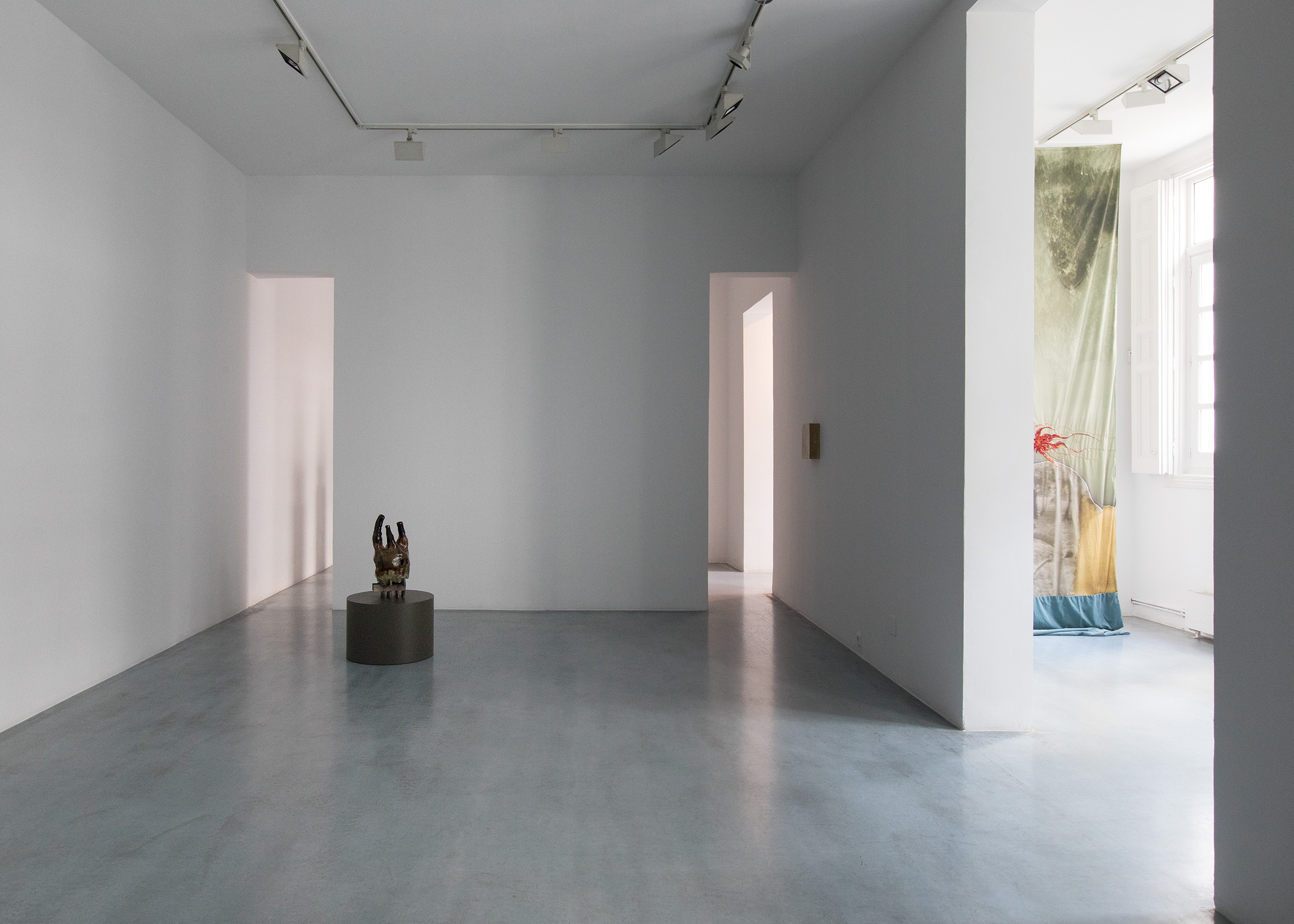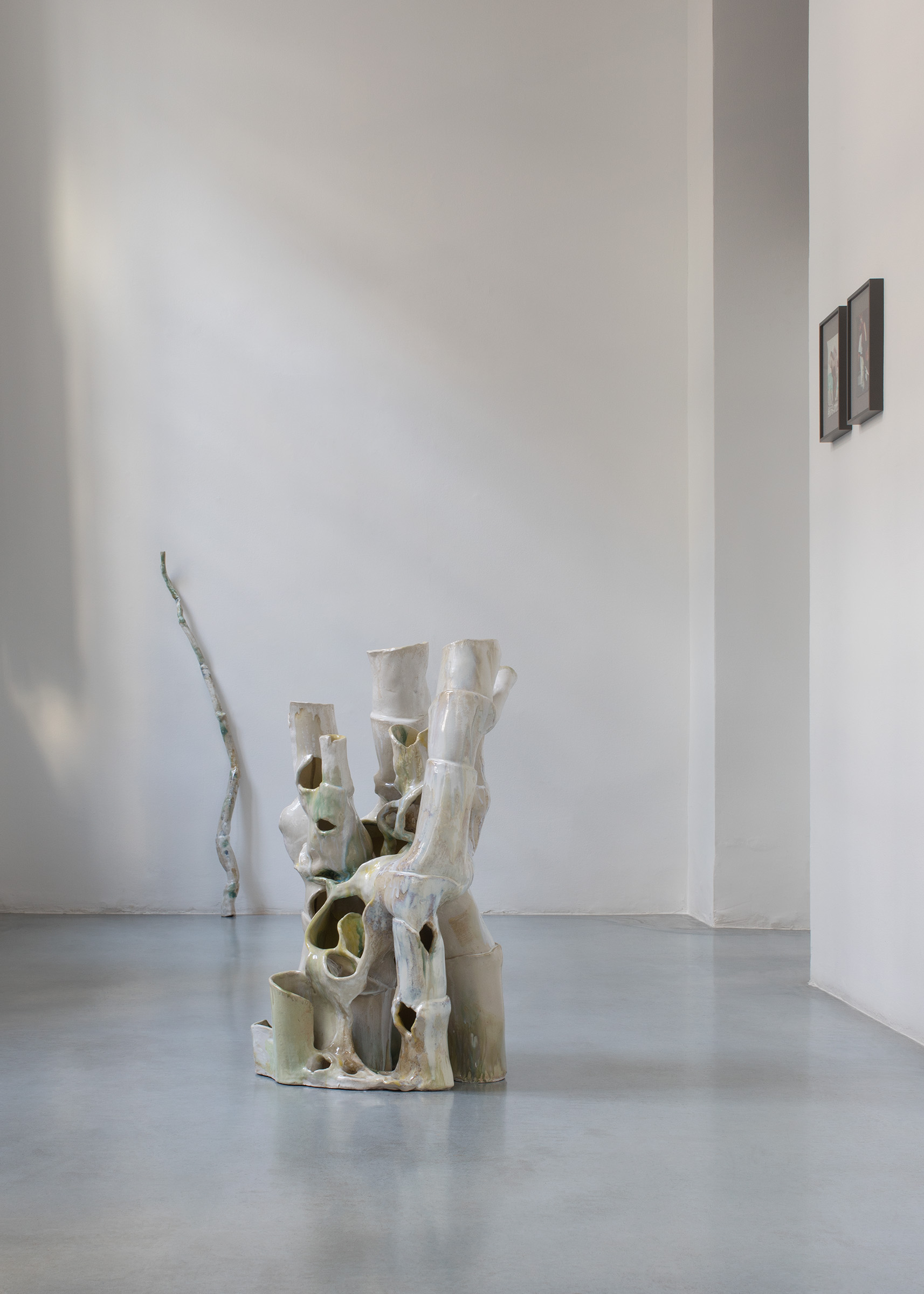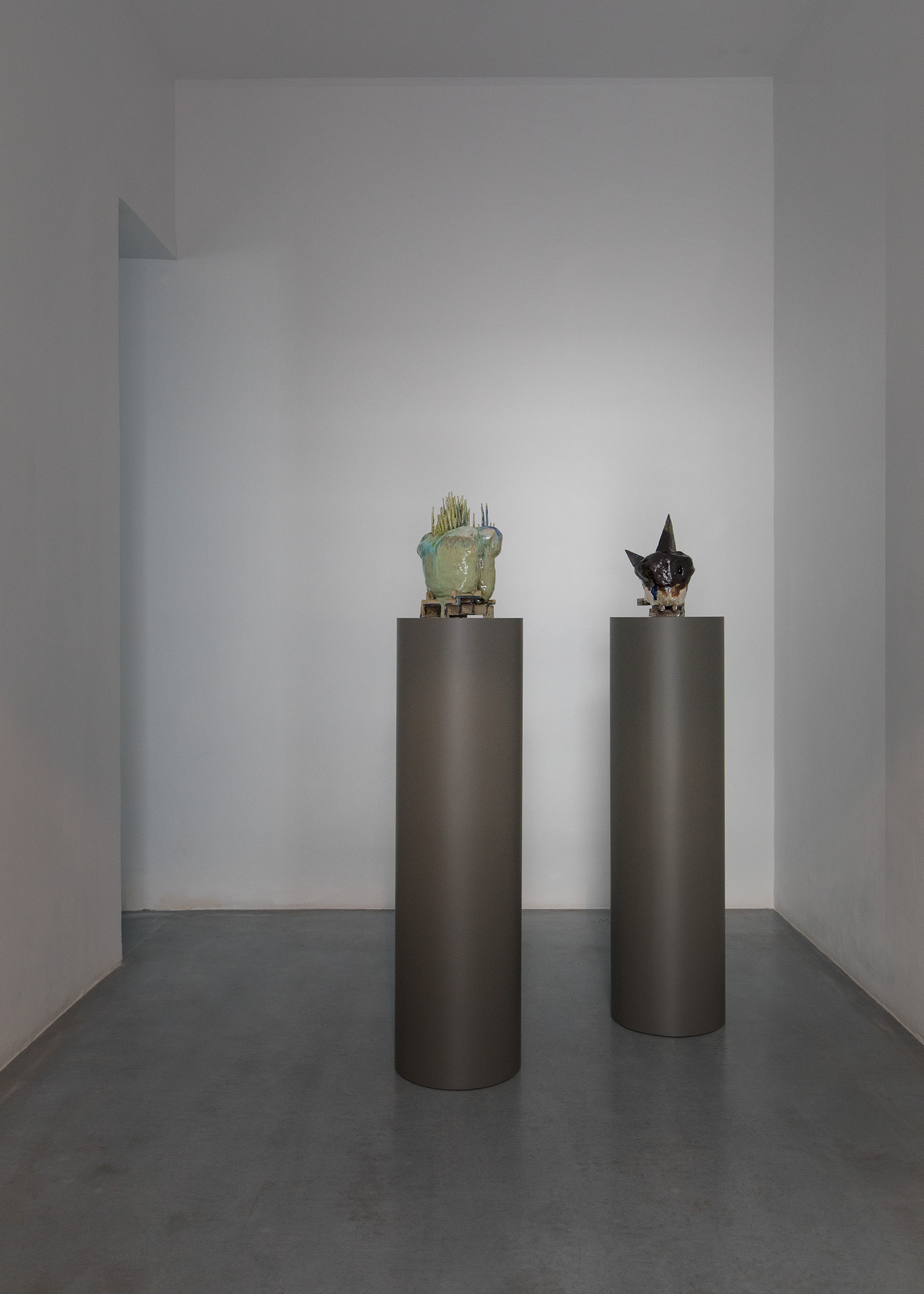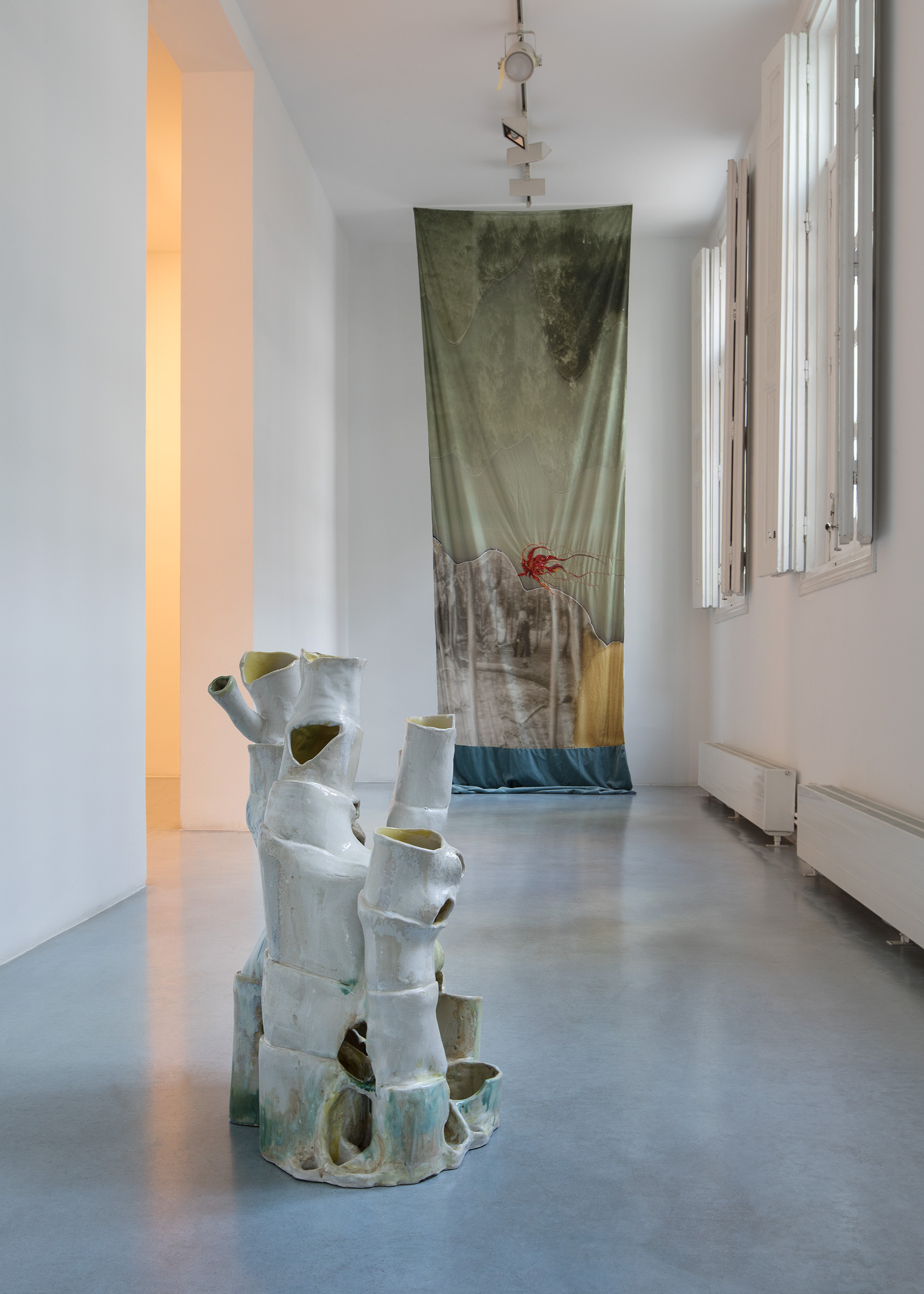If we dissolve now, we are more than we ever were
“De-differentiation” and “de-architecturization”: these are terms used by Robert Smithson in his work Hotel Palenque to refer to the way that built structures and organic growth, decay and renovation, ruins past and future, all merge ineluctably into an a-centric, entropic object-site-process on the site of a decrepit hotel in the encroaching jungles of the Yucatán peninsula. Moreover, Hotel Palenque, in its own shifting form — initially a live and witty lecture-cum-slideshow that the artist presented to a group of architecture students, a low-quality recording of which was later retrieved and reassembled after his death so as to be exhibited in museum settings around the world as an ersatz art work — echoes its subject matter: Hotel Palenque, like the Hotel Palenque, is a ruin in reverse, something does not fall but rather rises into ruin.
“De-architecturalization” and “de-differentiation” are also apt terms to consider in the context of Isa Melsheimer’s current exhibition at the Galería Benítez. Titled If we dissolve now / We are more than we ever were, the exhibition presents new works in various formats — ceramics, textiles and photographs — throughout which the intertwining of the inorganic with the organic and of stasis with flux functions both as motif and as concept. A number of the ceramics on view consist of rectilinear structures over and through which amorphous shapes seem to melt and surge and ooze — a kind of ‘de-architecturalization in which the apparently ‘natural’ world overtakes the built environment, as in an encroaching jungle or a bog’s rising water table — whereas in others the sequence seems to be reversed, where there is the suggestion that natural forms are propulsively acquiring engineered-like structural characteristics. The process conveyed by these works seems more reciprocal than juxtapositional. In a similar bidirectional fashion, Melsheimer’s gouaches depict movement via their content — not infrequently human figures in flight — while simultaneously embodying movement in their dynamic, fluid brushwork. And the textile-photographic works, with their literal conjoining of manual production and mechanical reproduction, maintain this sense of intertwined organic-inorganic synthesis.
To “de-differentiate” means to return something that was differentiated (at least to our experience) to an undifferentiated state: in a word, to dissolve. In this sense it functions as the operative principle throughout the works on view in the exhibition If we dissolve now / We are more than we ever were, where it is reinforced by the persistent references to nature, natural processes and, ultimately, to the earth (and what medium is more closely linked to the earth itself than ceramics, as Melsheimer’s ceramic work so exquisitely shows?). But nothing can dissolve into nothing. In terms of earth and earthly matters, the biosphere is a closed system. Anything that dissolves re-solves into something else. Ruins rise, ruins fall. As does everything, always.
Text: Georg Stolz
